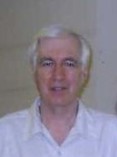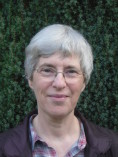About us
John Mullaney
Born in Beaconsfield in 1943, John attended Our Lady of Sion, Kensington, St Benedict’s School, Ealing and The Salesian College, Chertsey. While a member of the Servite Order he studied Philosophy and Theology at the Gregorian University, Rome. John also attended the Università per Stranieri di Perugia where he became interested in architecture. He produced work for the Council of Europe on Italian Medieval and early Renaissance buildings. Whilst living in Italy he taught from Middle School to University levels. In England he studied History and Italian at Reading University, where he also met his wife, Lindsay.
On completion of his PGCE he taught at Hugh Faringdon Catholic Secondary School in Reading. He went on to take a Masters in Education at Reading University, specialising in the History and Philosophy of Education.
In 1979 John and Lindsay set up Caversham Bookshop. During this time John was involved in producing two books about the history of Caversham and wrote the first booklet about the history of St James’ Parish. He joined the editorial team of the Caversham Bridge ecumenical newspaper and was its first Catholic editor. In 2004 John retired, became a school governor and engaged in his passions for gardening and historical research.
He now spends a geat deal of time researching the history of Reading Abbey. His special interest is in its architecture, art and music and how these all contributed to life in the Abbey both for those who lived there and for those visited it.
Lindsay Mullaney
Co-founder of Scallop Shell Press, with her husband John, Lindsay (née Stainthorp) was born in Preston in 1949. She went to Lark Hill Convent School run by the FCJ order. She attended Reading University where she gained a First in French and Italian.
On completing her PGCE she was appointed Head of Languages at Hugh Faringdon Catholic Secondary School, Reading. She became an examiner for Ordinary Level GCE and for Advanced Level French, in addition to being local Consortium Secretary for French CSE. She gained a Masters in Applied Linguistics from Reading University in 1979.
On leaving teaching she joined John in Caversham Bookshop. Lindsay became renowned not only as ‘that nice lady in the bookshop’, but also for her annual quizzes which raised many thousands of pounds for charities. She also ran various literary competitions connected with the Caversham Festival, which she and John helped to found.
Since retiring Lindsay has become a Hospital Chaplaincy Volunteer, making weekly visits to the Royal Berkshire Hospital. She is also a member of a local choir, Parenthesis, as well as St James’ Church choir. She loves looking after her grandchild and introducing him to the delights of gardening.
TALKS AND PRESENTATIONS
John and Lindsay are happy to give talks on the subjects listed below. The content can be varied to take account of specific interests and requests. They are given by one or other or both of us depending on the topic. All our talks are fully illustrated with a PowerPoint presentation.
Our talks usually last for about 45 minutes to an hour with time for questions. We have all our own equipment but some venues may prefer we use theirs. We normally ask a fee of between £40 to £50 depending on the talk. This is used to fund further research and on occasion we give a portion to specified charities.
ILLUSTRATED TALKS
The Abbey Quarter: how it came into being and its significance to Reading today John
The Forbury from Saxon times to the present John
François Longuet and the Reading Mission Lindsay
Henry I and his significance to Reading Lindsay and/or John
History of Christian Pilgrimage with special reference to Reading. Lindsay
History of Reading’s prisons from 1314 to the closure of Reading Gaol in 2014 John
Medieval Pilgrimage to Reading and Caversham Lindsay and/or John
Pilgrimage yesterday and today. Lindsay and/or John
Pugin and his architecture as exemplified in St James' Church, Pugin’s first church design John
Reading Abbey, its dissolution under Henry VIII and the aftermath John
Return of Catholicism to Reading after the Reformation Lindsay and/or John
What happened to the Abbey? The Ruins today and a look at the buildings and spaces that replaced the ancient Abbey John Aspects of the architecture, art, music and life of the Monastery John
LECTURES
Medieval Pilgrimage, Reading Abbey and Catholic Pilgrimage in today’s Reading John
This is a formal lecture with slides and lasts for about 1 to 1 ¼ hours
The first part examines the origins and development of medieval pilgrimage and how the Reformation sought to end the practice
The second part moves to an analysis of the developing relationship between Reading’s Catholic community and the town with specific reference to the Abbey.
The lecture lasts just over one hour but it can be divided into two lectures of half an hour each with ample time for debate, questions and discussion.




